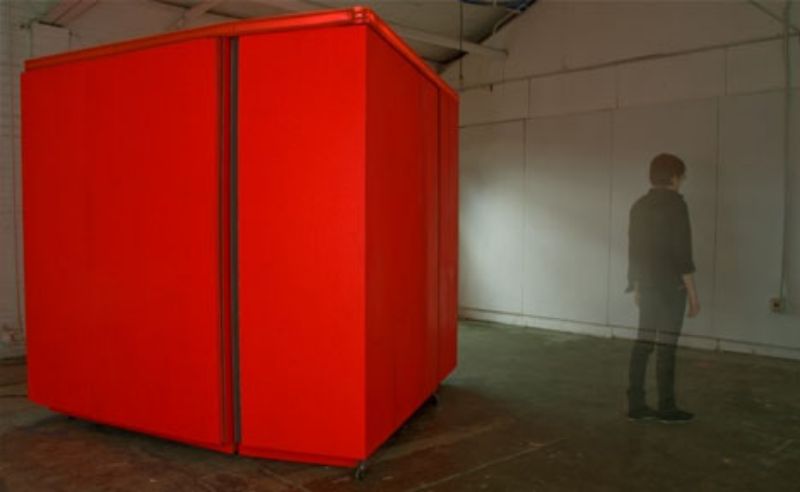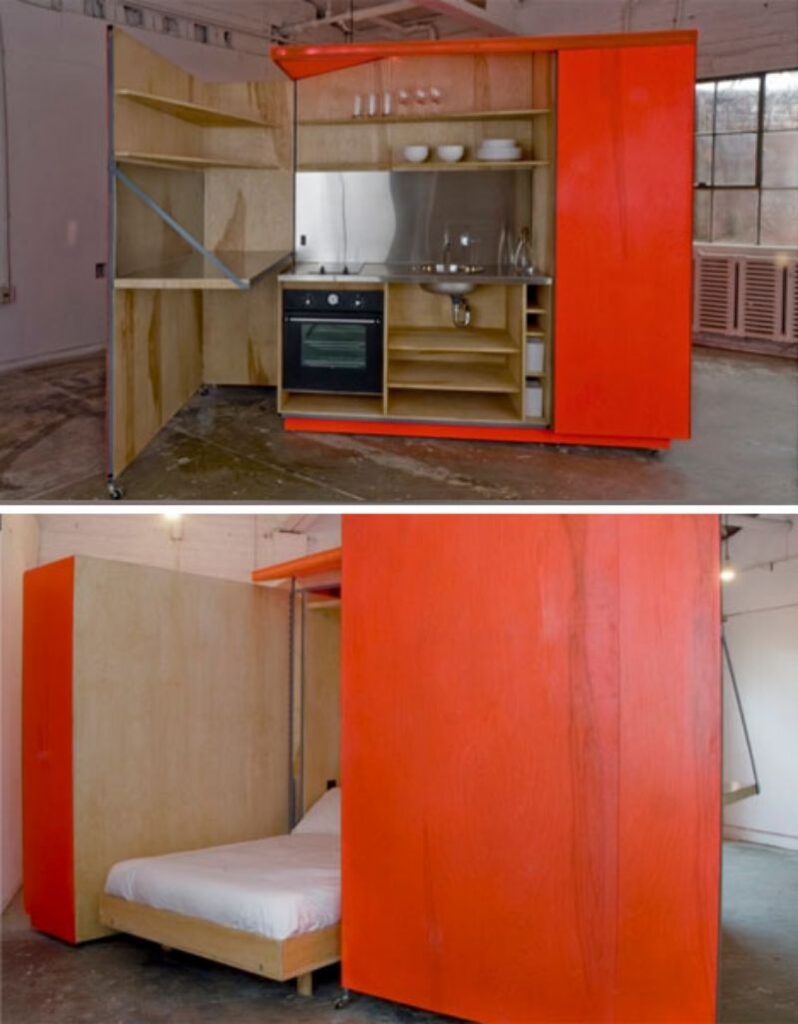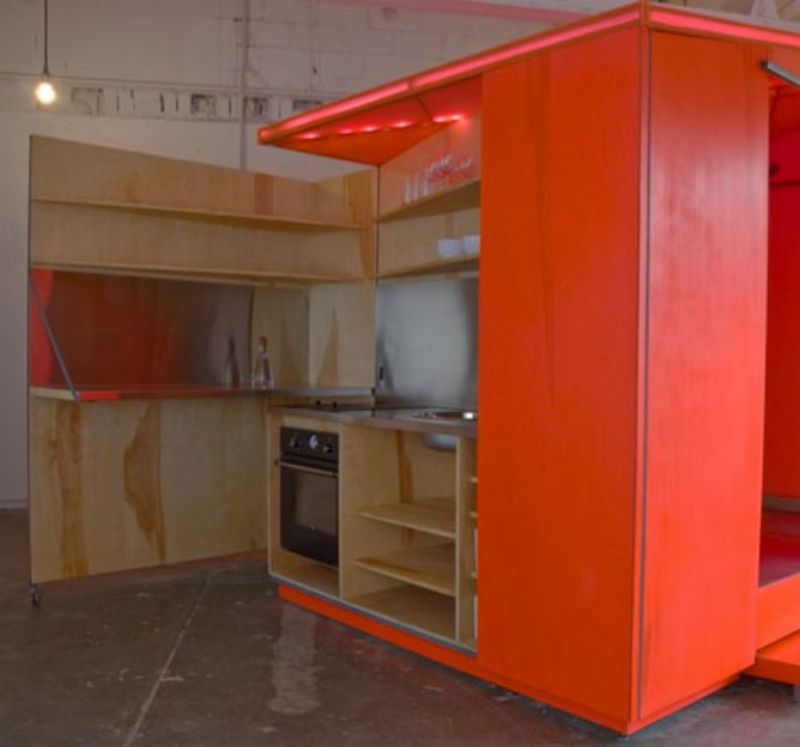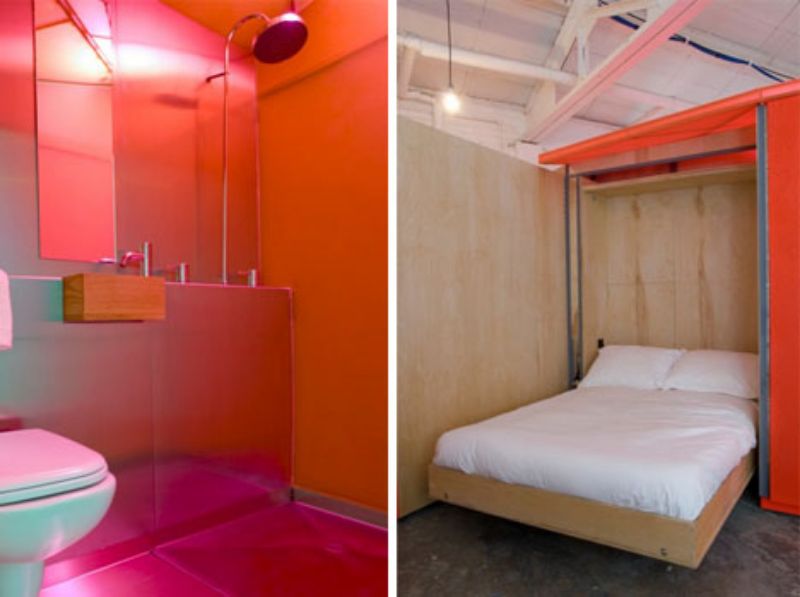New Manufactured Mobile Box Home (Retro)Fits Old Spaces

Picture a well-constructed industrial structure, sound and stable from its columns and beams to walls and roofs but entirely devoid of interior partitions and completely unused. Now add to that a series of livable units, square in plan and elevation, and the interstitial spaces as suddenly-active communities places, shared walkways in a new arrangement of residential form. All of this is based on a simple-looking box home by designer and recent Cranbrook graduate Andrew Kline.

“Interior Living Unit” breaks down into eight modular parts for easy transportation in a conventional moving truck, the assembles into a small self-contained apartment Unlike other mobile living structures, however, this is uniquely manufactured for interior use only – a home made to fit inside existing buildings.

This idea fits a curious niche within the exploding market of modular prefabricated houses and vintage warehouse rehabilitations. It is neither fully mobile like its double-wide counterparts, but nor is it as permanent as the loft-style remodeling of an old industrial building. There are other uses to be explored as well: a yoga or dance instructor installing one of these to live in within their teaching space, artists installing one so their studio becomes a creative workplace as well. The inside surfaces are left as lighter natural wood, creating a soft contrast with the brighter and bolder orange exterior.

Kitchen, bedroom and bathroom are folded, slid and otherwise opened out and up as needed – accessories include cabinets, shelves, stoves, other storage spaces and essential appliances. The biggest problem, though, seems to be: if you have more than one of these units in a single space, how to you manage to have privacy – perhaps not needed for cooking, but definitely desirable when you go to bed at night. Another critical set of questions revolve around utilities: how do you hook up custom plumbing, electrical, communications or other necessary networks of pipes and cables?




